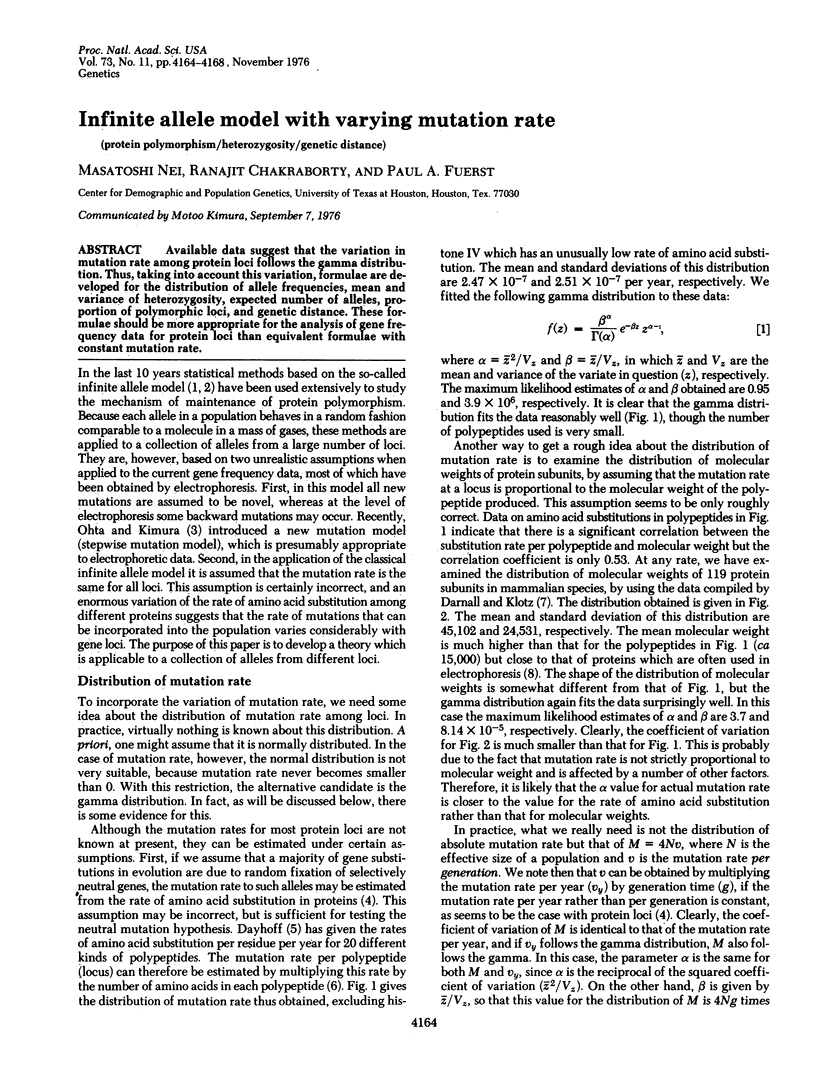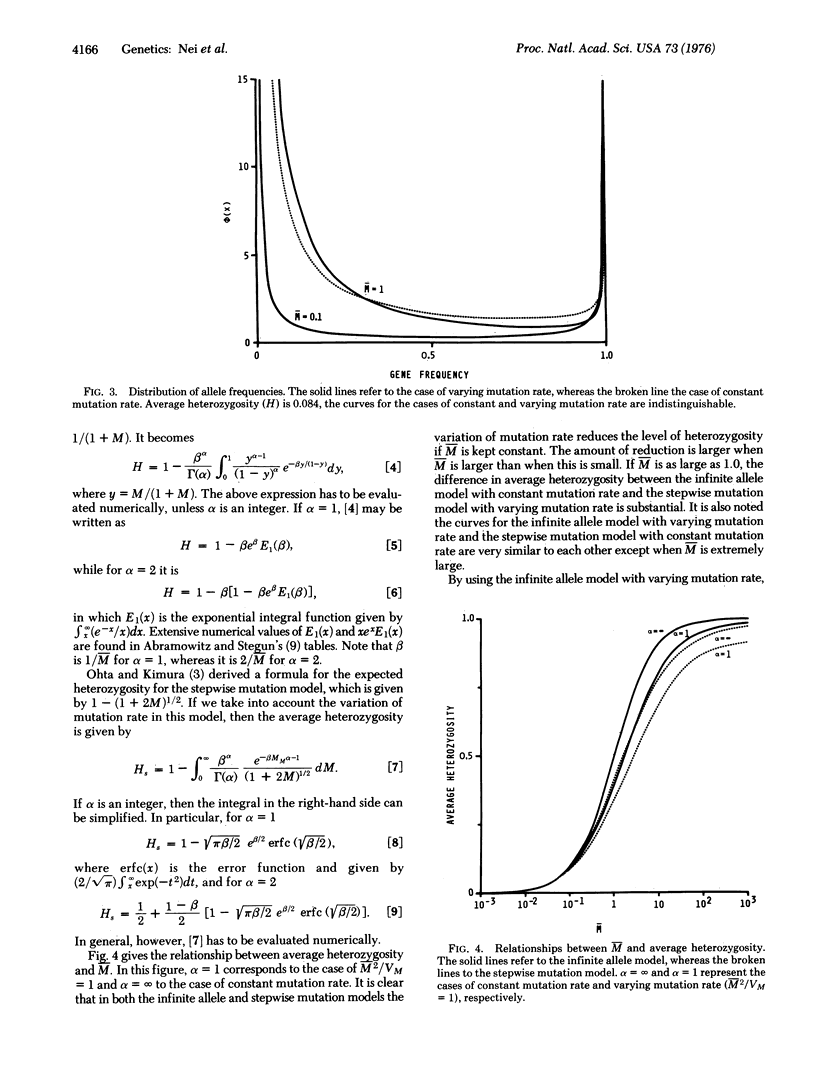Abstract
Available data suggest that the variation in mutation rate among protein loci follows the gamma distribution. Thus, taking into account this variation, formulae are developed for the distribution of allele frequencies, mean and variance of heterozygosity, expected number of alleles, proportion of polymorphic loci, and genetic distance. These formulae should be more appropriate for the analysis of gene frequency data for protein loci than equivalent formulae with constant mutation rate.
Full text
PDF




Selected References
These references are in PubMed. This may not be the complete list of references from this article.
- Darnall D. W., Klotz I. M. Subunit constitution of proteins: a table. Arch Biochem Biophys. 1975 Feb;166(2):651–682. doi: 10.1016/0003-9861(75)90432-4. [DOI] [PubMed] [Google Scholar]
- Ewens W. J. The sampling theory of selectively neutral alleles. Theor Popul Biol. 1972 Mar;3(1):87–112. doi: 10.1016/0040-5809(72)90035-4. [DOI] [PubMed] [Google Scholar]
- KIMURA M., CROW J. F. THE NUMBER OF ALLELES THAT CAN BE MAINTAINED IN A FINITE POPULATION. Genetics. 1964 Apr;49:725–738. doi: 10.1093/genetics/49.4.725. [DOI] [PMC free article] [PubMed] [Google Scholar]
- Kimura M., Ohta T. Distribution of allelic frequencies in a finite population under stepwise production of neutral alleles. Proc Natl Acad Sci U S A. 1975 Jul;72(7):2761–2764. doi: 10.1073/pnas.72.7.2761. [DOI] [PMC free article] [PubMed] [Google Scholar]
- Kimura M. Theoretical foundation of population genetics at the molecular level. Theor Popul Biol. 1971 Jun;2(2):174–208. doi: 10.1016/0040-5809(71)90014-1. [DOI] [PubMed] [Google Scholar]
- Li W. H., Nei M. Drift variances of heterozygosity and genetic distance in transient states. Genet Res. 1975 Jun;25(3):229–248. doi: 10.1017/s0016672300015664. [DOI] [PubMed] [Google Scholar]
- Milkman R. Electrophoretic variation in Escherichia coli from natural sources. Science. 1973 Dec 7;182(4116):1024–1026. doi: 10.1126/science.182.4116.1024. [DOI] [PubMed] [Google Scholar]
- Nei M., Fuerst P. A., Chakraborty R. Testing the neutral mutation hypothesis by distribution of single locus heterozygosity. Nature. 1976 Aug 5;262(5568):491–493. doi: 10.1038/262491a0. [DOI] [PubMed] [Google Scholar]
- Ohta T., Kimura M. A model of mutation appropriate to estimate the number of electrophoretically detectable alleles in a finite population. Genet Res. 1973 Oct;22(2):201–204. doi: 10.1017/s0016672300012994. [DOI] [PubMed] [Google Scholar]
- Ohta T., Kimura M. Functional organization of genetic material as a product of molecular evolution. Nature. 1971 Sep 10;233(5315):118–119. doi: 10.1038/233118a0. [DOI] [PubMed] [Google Scholar]
- Ota T. Mutational pressure as the main cause of molecular evolution and polymorphism. Nature. 1974 Nov 29;252(5482):351–354. doi: 10.1038/252351a0. [DOI] [PubMed] [Google Scholar]
- Stewart F. M. Variability in the amount of heterozygosity maintained by neutral mutations. Theor Popul Biol. 1976 Apr;9(2):188–201. doi: 10.1016/0040-5809(76)90044-7. [DOI] [PubMed] [Google Scholar]


